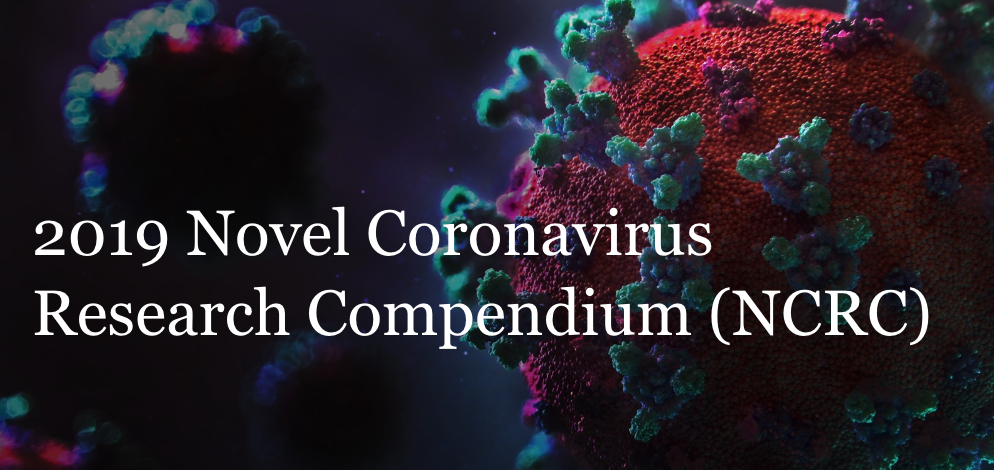Genomic characterization and epidemiology of an emerging SARS-CoV-2 variant in Delhi, India
This article has been Reviewed by the following groups
Discuss this preprint
Start a discussion What are Sciety discussions?Listed in
- Evaluated articles (ScreenIT)
- Evaluated articles (NCRC)
- High interest articles (NCRC)
Abstract
In the spring of 2021, Delhi, India experienced a wave of coronavirus cases that overwhelmed healthcare services despite the population showing a high level of immune positivity. Dhar et al . collated a mixture of serosurveillance, quantitative polymerase chain reaction, and genomic data, finding that waves of variants had passed through the Delhi population during 2020 and 2021. The alpha (B.1.1.7) variant dominated in March 2021 and was rapidly replaced by the delta (B.1.617.2) variant in April and May 2021. The delta variant outcompeted its predecessors by mutations that enhanced replication, immune evasion, and host receptor avidity, thus increasing transmissibility, reinfection, and vaccination breakthrough. —CA
Article activity feed
-
-

Our take
This study, available as a preprint and thus not yet peer-reviewed, describes the rapid expansion of the B.1.617.2 (Delta) variant in India in April-May 2021, which resulted in significant fatalities due to a short-term collapse of the healthcare system. While B.1.617.2 appears to be 50% more transmissible than B.1.1.7, there is not yet evidence supporting increased symptom severity or case fatality. While B.1.617.2 is potentially associated with increased risk of vaccine breakthrough infection when compared to other lineages, rates of these infections are incredibly low and observed symptoms are mild. Some data indicate that prior SARS-CoV-2 infection may not provide sufficient protection against reinfection with B.1.617.2, illustrating the importance of widespread COVID-19 vaccination for the entire population, …
Our take
This study, available as a preprint and thus not yet peer-reviewed, describes the rapid expansion of the B.1.617.2 (Delta) variant in India in April-May 2021, which resulted in significant fatalities due to a short-term collapse of the healthcare system. While B.1.617.2 appears to be 50% more transmissible than B.1.1.7, there is not yet evidence supporting increased symptom severity or case fatality. While B.1.617.2 is potentially associated with increased risk of vaccine breakthrough infection when compared to other lineages, rates of these infections are incredibly low and observed symptoms are mild. Some data indicate that prior SARS-CoV-2 infection may not provide sufficient protection against reinfection with B.1.617.2, illustrating the importance of widespread COVID-19 vaccination for the entire population, including previously infected individuals. This study clearly demonstrates the risk that highly transmissible variants pose to an effective SARS-CoV-2 public health response, even in the setting of high seroprevalence due to prior infections.
Study design
retrospective-cohort
Study population and setting
This study describes the emergence and spread of the SARS-CoV-2 B.1.617.2 (Delta) variant of concern, which overwhelmed the healthcare system in Delhi and northern India in April-May 2021. Case, positivity, and death rates were obtained from the Integrated Disease Surveillance Programme (IDSP) database, which is maintained by India’s National Centre for Disease Control (NCDC). SARS-CoV-2 seroprevalence was determined using samples collected from laboratory personnel and their family members at over 40 sites across India in two phases: between May and September 2020 (n=10,427) and between February and March 2021 (n=9,918); positive samples were assayed for antibody titer and neutralizing response. Separately, through the NCDC’s Central Surveillance Unit of Integrated Disease Surveillance Programme, SARS-CoV-2 positive nasopharyngeal swab samples (n=11,001) were collected from nine states and territories across India between November 2020 and May 2021; this included samples from 27 persons with vaccine breakthrough infection. Cycle threshold (Ct) values were used to estimate variant-based differences in viral load. RNA was used to produce genomic sequences (n=8,477) for phylogenetic analysis and mutational profiling. Structural models for the B.1.617.2 spike protein were generated using established reference structures, modified to include variant mutations.
Summary of main findings
Prior to March 2021, India successfully managed multiple waves of SARS-Cov-2 infection using non-pharmaceutical interventions. SARS-CoV-2 seropositivity measured 42% at the end of March, with higher rates observed in large cities (i.e., Delhi, with a rate of 56%). However, median antibody titers and neutralization levels for seropositive individuals fell below accepted cutoffs, suggesting that prior infection may provide only limited protection. In this setting, cases of SARS-CoV-2 increased dramatically between the third week of March and the end of April, with positivity rates rising from 1% to 30% and daily cases peaking at ~30,000. This surge in infection paralleled the rapid expansion of the B.1.617.2 sublineage (seeded from the B.1.617 lineage, introduced in early February) to represent ~60% of cases in both Delhi and north India by the end of April. Transmissibility of B.1.617.2 was increased by 50% as compared to B.1.1.7, which may be driven by a 50-fold increase in viral load (as estimated by Ct values). At this time, there is no evidence of increased disease severity or fatality associated with B.1.617.2 infection. The variant was overrepresented among vaccine breakthrough cases (19/27 [76%]), but all were mild. The B.1.617.2 variant harbors a unique combination of seven mutations in spike protein. Three mutations (T19R, R158G, and ΔE156-F157) are found at key recognition sites for monoclonal antibodies. Another mutation (L452R) has been implicated in immune escape. One mutation (T478K) appears to improve viral interaction with the ACE2 receptor. Finally, three mutations (P681R, D950N, and D614G) are proximal to the S1/S2 and furin cleavage sites and may be responsible for increased transmissibility.
Study strengths
This study integrates reported case data, serosurveillance data, genomic epidemiology, and structural modeling to thoroughly describe the emergence of the B.1.617.2 variant in India. Viral sequence analyses were completed using a large scale, geographically diverse, randomly collected sample set.
Limitations
Serosurveillance data was collected from a non-random sample of laboratory employees and their families, which may not be representative of the general population. While measures of antibody titer and neutralization capability suggest that prior infection may not be protective against future infection, no SARS-CoV-2 reinfection data was collected. The sample set used for sequencing overrepresented populated cities (i.e. Delhi) vs. rural areas. The subset of samples used to correlate B.1.617.2 with vaccine breakthrough infection was quite small (n=27). The functional relevance of lineage-defining mutations was assumed based on structural modeling and/or the impact of individual mutations in other variants, rather than on functional assays.
Value added
This study is the first to describe the genomic epidemiology of the B.1.617.2 variant of concern in India. In addition, a small subset of samples was used to explore the relationship between the variant and vaccine breakthrough infection.
-

SciScore for 10.1101/2021.06.02.21258076: (What is this?)
Please note, not all rigor criteria are appropriate for all manuscripts.
Table 1: Rigor
Ethics IRB: The study was approved by the NCDC Ethics Review Committee vide approval 2020/NERC/14. Sex as a biological variable not detected. Randomization not detected. Blinding not detected. Power Analysis not detected. Table 2: Resources
Antibodies Sentences Resources Elecsys Anti-SARS-CoV-2 kit from Roche Diagnostics was used to detect antibodies to SARS-CoV-2 NucleoCapsid antigen. Anti-SARS-CoV-2suggested: NoneSARS-CoV-2 NucleoCapsid antigen.suggested: (Proteintech Cat# 28769-1-AP, RRID:AB_2881212)Software and Algorithms Sentences Resources The samples were processed as per the CovidSeq (Illumina) protocol for sequencing on the NextSeq 550 (Illumina) instrument according to the manufacturer’s instructions. Cov…SciScore for 10.1101/2021.06.02.21258076: (What is this?)
Please note, not all rigor criteria are appropriate for all manuscripts.
Table 1: Rigor
Ethics IRB: The study was approved by the NCDC Ethics Review Committee vide approval 2020/NERC/14. Sex as a biological variable not detected. Randomization not detected. Blinding not detected. Power Analysis not detected. Table 2: Resources
Antibodies Sentences Resources Elecsys Anti-SARS-CoV-2 kit from Roche Diagnostics was used to detect antibodies to SARS-CoV-2 NucleoCapsid antigen. Anti-SARS-CoV-2suggested: NoneSARS-CoV-2 NucleoCapsid antigen.suggested: (Proteintech Cat# 28769-1-AP, RRID:AB_2881212)Software and Algorithms Sentences Resources The samples were processed as per the CovidSeq (Illumina) protocol for sequencing on the NextSeq 550 (Illumina) instrument according to the manufacturer’s instructions. CovidSeqsuggested: NoneThe raw data generated in binary base call (BCL) format from NextSeq 550 was demultiplexed to FASTQ file using bcl2fastq v2.20. bcl2fastqsuggested: (bcl2fastq , RRID:SCR_015058)Protein annotation and modelling: In total of 8,477 SARS-CoV-2 genomes were annotated for amino-acid substitutions by SnpEff version 4.5 (Cingolani et al., 2012). SnpEffsuggested: (SnpEff, RRID:SCR_005191)Each chain was mutated for missense mutations using ChimeraX (Goddard et al., 2018) whereas deletions in each chain were introduced by employing Coot (Emsley et al, 2010). Cootsuggested: (Coot, RRID:SCR_014222)Results from OddPub: We did not detect open data. We also did not detect open code. Researchers are encouraged to share open data when possible (see Nature blog).
Results from LimitationRecognizer: An explicit section about the limitations of the techniques employed in this study was not found. We encourage authors to address study limitations.Results from TrialIdentifier: No clinical trial numbers were referenced.
Results from Barzooka: We did not find any issues relating to the usage of bar graphs.
Results from JetFighter: We did not find any issues relating to colormaps.
Results from rtransparent:- Thank you for including a conflict of interest statement. Authors are encouraged to include this statement when submitting to a journal.
- Thank you for including a funding statement. Authors are encouraged to include this statement when submitting to a journal.
- No protocol registration statement was detected.
Results from scite Reference Check: We found no unreliable references.
-


